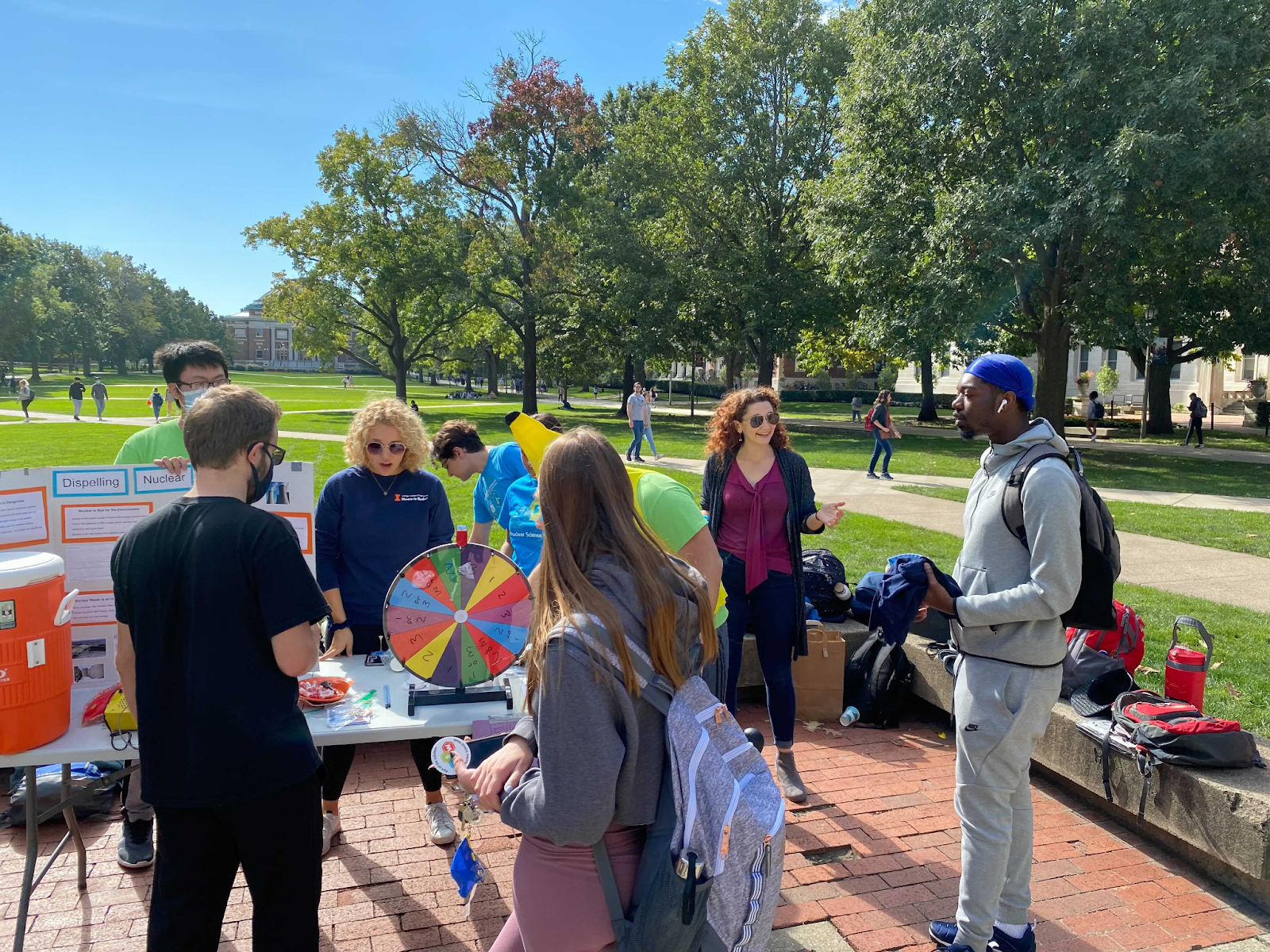A response to The U of I’s Micro-Modular Reactor should be in another location
I’m a third-year graduate student at the University of Illinois at Urbana-Champaign, where I study nuclear engineering. Like many of my peers, I pursued nuclear engineering out of concern for the environment and its future. I’m also a Champaign homeowner. As a student and a homeowner, I know that a micro nuclear reactor, like the one proposed by the Nuclear Powered UIUC team, would be excellent for the school and the community. The American Nuclear Society chapter at U of I spoke to students during Nuclear Science Week. Everyone we spoke to shared our enthusiasm for U of I’s very own nuclear reactor. My optimism and excitement for this project are shared by dozens of other students and community members as well.
U of I has an incredible opportunity to add to Illinois’ impressive history of scientific leadership and to the University’s commitment to cutting-edge research and sustainable development by building a new research microreactor designed by USNC. I cannot stress enough how amazing it would be to have such a reactor at the University.
First, building this reactor would be a first-of-a-kind in the United States. Micro and small modular reactors will likely play a significant role in the future of nuclear power. Demonstrating the feasibility of such a reactor design is a crucial first step in full commercialization and unlocking the learning curves seen in South Korea, India, and China, that manifest experience in cost reductions.
Second, the reactor proposed by the U of I would be a research reactor, primarily. The advantages such a project offers future students are unparalleled. U of I students could witness and possibly engage in operating practices firsthand. These are valuable experiences for future reactor operators and engineers that no other school could provide. Thus, having a microreactor on campus makes the University even more attractive to prospective students, researchers, and professors.
Third, a microreactor is an excellent addition to the University’s advanced energy portfolio. Currently, the University boasts two solar farms and a wind power purchase agreement. Along with a geothermal loop that partially heats and cools the new Campus Instructional Facility, and an exciting project to study agrivoltaics on campus. However, none of these strategies can easily produce steam. Unless the University wants to reimagine the way it heats its buildings completely, there are few carbon-free options besides a small nuclear reactor. Once again, the current proposal is for a research reactor that could demonstrate this ability — an essential step towards achieving the University’s carbon goals. Policymakers and leaders will look to U of I as a shining example of the possibilities for a high energy, low-carbon future.
Finally, there is a historical precedent for advanced reactors at universities and communities throughout the state. Illinois has been at the center of science and innovation, nuclear science in particular, for decades. The first artificial (I emphasize artificial because fission occurred naturally in Earth’s history) fission reactor, Chicago Pile 1, went critical at the University of Chicago in 1942. The first commercial nuclear powered electric generating station, Dresden Unit 1, began operation in 1960 near Morris, Illinois. U of I operated a TRIGA Mark II research reactor from 1960 until 1998 and safely decommissioned the facility in 2012. Today, the University conducts materials experiments on a nuclear fusion device, HIDRA, to advance the dream of producing energy from nuclear fusion. Further, the State of Illinois has 11 commercial reactors producing over 50% of Illinois’ electricity, more than any other state in the country. This accounts for almost 90% of the state’s carbon-free energy.
If you have more questions about the proposed reactor and its design, I wrote another article in January 2021 detailing the benefits of nuclear energy on campus. Additionally, the Nuclear Powered U of I Team has a robust FAQ page. If your question isn’t addressed, they are eager to hear from you. If you support U of I’s endeavor to lead the world in a clean energy future, please consider writing to or calling Representative Carol Ammons, or State Senator Scott Bennett telling them that you support the proposed U of I reactor.
Samuel Dotson is a graduate student at the University of Illinois, studying nuclear engineering. Dotson’s research is funded by the Nuclear Regulatory Commission, responsible for ensuring safe operation of nuclear reactors in the U.S.








